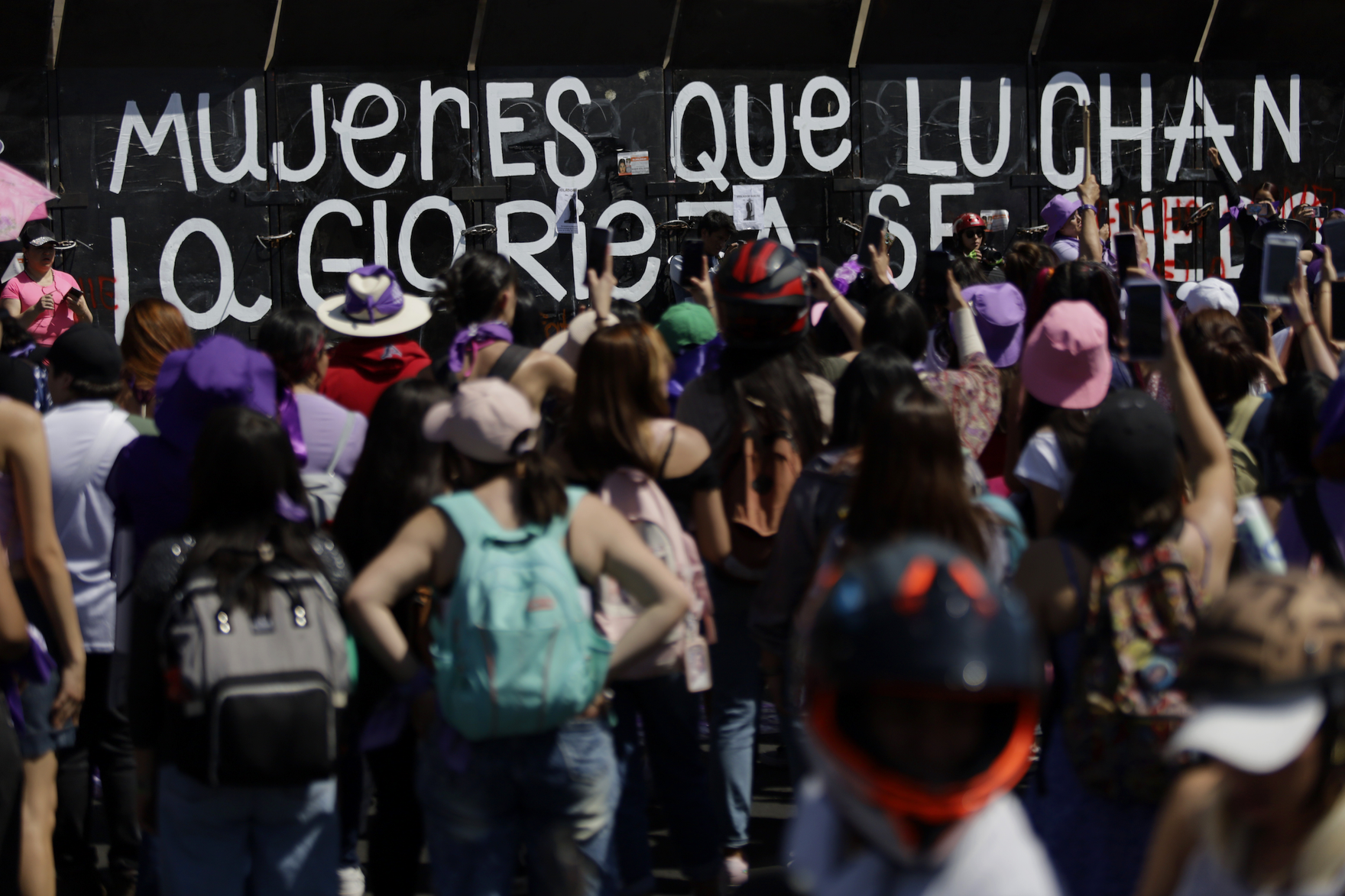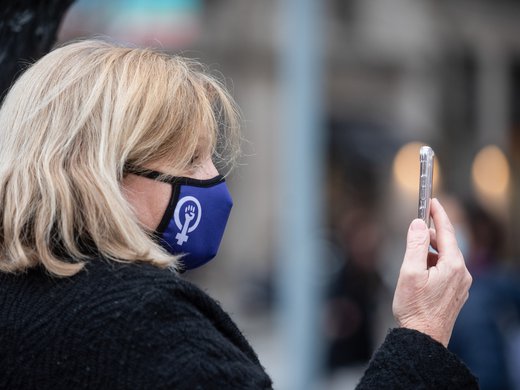As communities worldwide continue to deal with resurgent nationalism and authoritarianism, one thing is increasingly clear: women and gender rights are at the heart of this struggle. Indeed, the ongoing, technology-enabled pushback against democracy and human rights appears hand in hand with regression on women’s rights.
The sixty-seventh session of the United Nations’ Commission on the Status of Women (CSW67) was a mirror for this troubled interaction between technology and geopolitical tensions in a multipolar world. As Sofia Calltorp, Sweden’s ambassador for gender equality, put it, “a war on women’s rights is a war on democracy.”
Three trends emerged in our discussions at CSW67, which I attended as a member of the Canadian Civil Society Organization delegation.
The Gender Digital Divide
First, as the executive director of UN Women, Sima Bahous, declared in her remarks to participants of CSW67, “the gender digital divide is the new face of gender inequality.” Simply put, women and girls have less access to technology and the internet than men and boys do. Women and girls have less access to devices, online education, information, and careers in the tech sector and other employment, and experience more threats to freedom of expression and online safety.
Patriarchal structures and socio-cultural norms have been reproduced in the development, design and use of new technologies. There is a continuum between the inequalities and discriminations that women and girls experience offline and online. And the tech inequality gap is even greater for Indigenous women, women of colour, women in rural areas and older women.
It’s now widely acknowledged that artificial intelligence (AI) and algorithms are not neutral but reflect social inequalities and prejudice, including toward women and marginalized communities. At CSW67, during a panel discussion organized by the German government, professor and Emmy Award–winning journalist Hilke Schellmann demonstrated how gender biases in AI algorithms developed by Google and Microsoft rate photos of women’s bodies as more “racy” than those of men.
These photos include pregnant women and women who wish to raise awareness about breast cancer by sharing photographs of their breasts during clinical examinations. As a result of this fraught classification, important content produced by and for women gets “shadow banned” and often becomes invisible.
The problem is hard to solve. Throughout the week, conference participants called for the “de-patriarchization” of the internet — in other words, for the dismantling of long-existing structures of “power privilege” that are reproduced online. But as Ivana Bartoletti, global chief privacy officer at Wipro and co-founder of the Women Leading in AI Network, said, the problem is not necessarily the technology. “The problem is societal and political. Tech is not neutral because it is created by humans and because our societies are not equal,” she said, arguing that algorithms cannot be de-biased until societies change their attitudes toward women and girls.
Other participants were somewhat more optimistic, suggesting that tech companies could be forced to be more transparent, accountable and diverse, and pushed to submit to a human rights audit. Earle Courtenay Rattray, the UN Secretary-General’s representative, said: “We must increase women’s participation and leadership in these fields — through broader recruitment pipelines, using quotas if necessary.…Without women’s contributions, tomorrow’s digital products and services will have gender inequality built into their code, right from the start.”
Governments should also set an example, other participants argued. Dilia Leticia Jorge Mera, the vice-minister of innovation, transparency and citizen attention of the Dominican Republic, lamented that women are still largely invisible in her country’s own ministry of innovation, leading to a lack of gender-sensitive tech policies.
Around the world, women experience many forms of cyberviolence: harassment, hate speech, doxing and sextortion.
Gendered Harassment, Discrimination, Disinformation
Second, women and girls are the principal targets of digital harassment and discrimination. In particular, female politicians, journalists and activists are subject to what has been coined gendered disinformation. As Earle Courtenay Rattray said in his speech at the CSW67, “Digital technologies have provided new tools to control, harm, silence, and discredit women — including those in the public eye. Online mob violence is a direct attack on democracy and is effectively censoring women, hounding them from office, and blunting girls’ ambition to step up as leaders.”
With experts and representatives from Ukraine to Singapore, Uganda, Afghanistan and Brazil attending, CSW67 revealed both the global nature of online misogyny and the threat it poses not only to women but also to national security and democracy. Around the world, women experience many forms of cyberviolence: harassment, hate speech, doxing and sextortion, among others. Not only do tech platforms amplify gendered disinformation through their business models but individuals in positions of power (ab)use these platforms to silence women and push them out of the public sphere. This reality is well documented by organizations such as #ShePersisted, Amnesty Tech and the International Development Research Centre.
The testimonies of women at CSW67 were particularly vibrant. To cite a few examples, Mexican sports journalist Marion Reimers compared the hateful messages on Facebook and Instagram she receives to “a death by a thousand cuts where there is no escape” and called online attacks on women an attack on democracy and freedom of speech. At a side event on the online safety of women journalists, Jodie Ginsberg, president of the Committee to Protect Journalists, emphasized that “there is an epidemic of misogyny online.” Other harrowing accounts included those by Fatima Faizi, an Afghan journalist who is trying to keep Afghan women in the news, and Olesia Ostapchuk, special correspondent at Holod, who fled Russia in 2022 and tries to report the truth about what is happening in Ukraine. The rise of authoritarianism and extremist movements go hand in hand with the attacks against women. One can only admire outspoken women who refuse to be silenced, but, from China to Iran and Saudi Arabia, how many of them have been muzzled by their governments?
Debate over Tech’s Responsibility
Finally, who would have thought that the term tech-facilitated gender-based violence could cause so much debate? As we worked on the CSW67 Agreed Conclusions, it became clear that several governments were pushing back against the expression, even though it has been used widely by experts and organizations, including UN Women and the Special Rapporteur on violence against women. The governments who disliked the term won, in the end, and the following wording is used instead in the conclusions: “gender-based violence that occurs through or is amplified by the use of technologies.”
The debate is a reflection of the lack of consensus on the responsibility of technologies when it comes to online violence and discrimination against women and girls. Does a particular tool itself facilitate gendered disinformation? Do tools make it easier to target women (i.e., “facilitate” the targeting) or do they make it possible (“enable” it)? Who should be held responsible — the tech companies who develop the tools and set up the policies, or the users?
There are also important debates under way about the role and responsibilities of governments in legislating the tech industry. While European countries such as Sweden and Romania are trying to protect women through initiatives such as the Summit for Democracy Cohort on Gender Equality, governments with anti-feminist tendencies, the Chinese regime in particular, were barely visible at the CSW67, despite their being home to many tech giants.
Women Are Leading the Charge for Change
Looking at these three trends, it’s impossible to ignore that the tech sector is failing women and girls.
Women have therefore taken matters into their own hands and are leading the charge.
In Somalia, the Ifrah Foundation is using social media to raise awareness of the horrors of female genital mutilation, which is illegal in many countries but still common in others, including Somalia. Representatives of Ifrah told the CSW67 that the digital campaign is one of the best ways to reach a widespread audience because a growing number of Somalis are using smartphones. Supported by the Irish government, the project is also a good example of the many North-South collaborative initiatives presented at the UN conference.
In Uganda, the feminist data collective Pollicy uses tech tools, training, games and digital campaigns to teach children how to be safe online, to build data skills among women politicians, and to raise awareness of digital threats to Muslim women human rights activists.
Finally, the Canadian Women’s Foundation created the Signal for Help tool, which is saving women around the globe. The tool enables a victim of gender-based violence to signal for help without leaving a digital trace. At a side event organized by Women and Gender Equality Canada, a foundation representative explained that the initiative was launched in April 2020 in response to an increase of domestic violence and an increased use of video calls during the COVID-19 pandemic. The signal, a hand gesture, became a call for support that could be used during any video call. Minister for Women and Gender Equality Marci Ien, who was present at CSW67, explained that Signal for Help went viral because it was simple, multi-lingual, and shareable on any video app. Indeed, the gesture has been used by women in the United States, and by women in Canada and Spain. This is a proof that tech can work for women.
Despite the current backlash against women and democracy worldwide, important questions were raised at CSW67. There is hope. Many participants agreed that what we need is a change of frame: access to technology is not only about numbers but about content and meaning. What should gender-sensitive technologies look like? What would it mean to infuse feminism into technologies?
The point is that technology is too important to be left to technologists alone. Technology can only work for women if women can participate in its creation. If they continue to be left out, democracy will bear the brunt.



